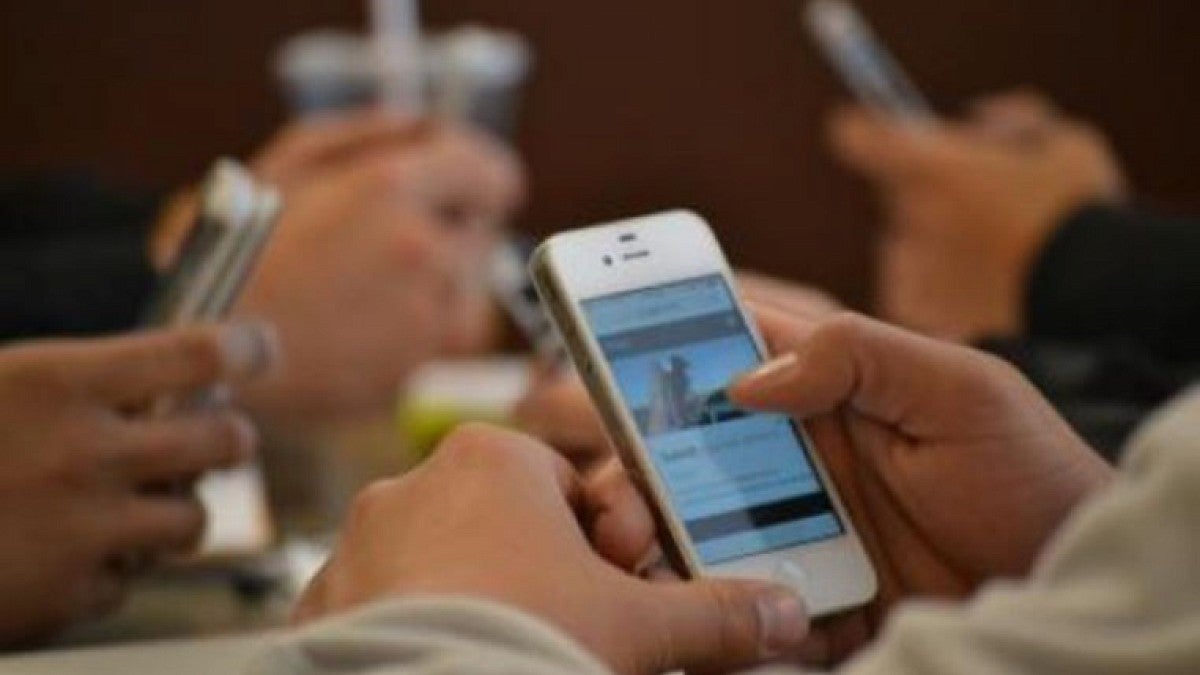New studies by the UO Center for Digital Mental Health hope to not only harvest personal data gleaned from cell phones and use it for good, they also aim to prevent suicide attempts in adolescents by identifying a crisis window when help can be offered at just the right moment.
Psychology professor Nick Allen, director of the center, said that by having access to the data on cell phones and analyzing patterns and activity, it is not only might be possible to identify personal crises, but also to potentially interrupt a suicide attempt.
“We are trying to understand how the patterns of behavior captured by phones can act as mental health signals,” he said. “If so, clinicians can use these data to get an objective picture of someone’s mental health instead of just asking, ‘How has your week been?’ The data can be indicative of when people need help the most.”
After conducting some initial studies with UO students the center is now embarking on a new set of studies with colleagues at Columbia University and the University of Pittsburgh.
“These will follow adolescents at high risk of suicide who will allow the study to access all aspects of their cell phone use,” Allen said. “The focus is to search for indications of when people are at higher risk and to identify a time to intervene.”
For most people who are at risk of suicide, the period when they are really likely to take action is relatively short, often only 10 to 15 minutes, Allen added. When barriers are put in the way of intervention attempts during this high-risk window, lives can be saved. Even minor actions, like storing ammunition separately from firearms or packaging medications in blister packs instead of bottles, can interrupt the process and provide an opportunity for help.
“If we can monitor people to get an indication of when these times of peak risk are, then we can intervene exactly in this high-risk window,” he said. “For example, we can push various types of information to people, such as contact details for their therapist or a family member, or we can send messages about coping skills.”
Indications of higher risk might be associated with rapid changes in a person’s emotional distress, social disconnection or sleep problems, all of which can be potentially gleaned from the phone by monitoring facial patterns in selfies, sleep levels, geographic movement, physical activity indicators, voice quality and language.
“We don’t have to ask the participants anything other than having them turn on the phone and use it as they would normally,” Allen explained. “The phones are capturing their behavior constantly and allow the study to get a picture of when behavior patterns change.”
Although collecting this kind of data can be considered intrusive, the team at the center has found that research participants are usually willing to allow access to their data.
“I think people are willing to share information for the same reason that other participants in research do; it is to help others,” Allen said. “One of the goals we want to achieve with this data is to empower the user. Silicon Valley gives you an email account for free, then they sell your data, which is not empowering. We aim to give it back to you, to empower you with your own health information. It's like a thermometer for your mental health.
“With mental health, if I receive feedback that says I’m not sleeping or that I might feel stressed, then I have the ability to do something about it and make positive behavioral changes – even if I would not have noticed these changes myself,” he added. “This allows us to intervene before the crisis.”
If someone is starting to think about suicide or they have a relapse with drugs or alcohol, the researchers might be able to see that in their language, patterns of movement or heart rate.
“Then we have the ability to deliver a preventative measure,” Allen said. “Let’s make a plan to get you in a good place so you can breathe, so you don’t drink alcohol. Here are the reasons for living; don’t lose sight of the big picture in the middle of a crisis.”
Despite the study’s goal for prevention, Allen also acknowledges that with different intentions, the improper use of the data can be harmful.
“But if you follow good ethical practices and get informed consent, then the data can be used to inform and empower the user, and that knowledge can be used by the individual to take greater control of their health,” he said. “These technologies do allow participants to be monitored 24/7, but in a therapeutic way for therapeutic reasons.”
—By Laurie Notaro, UO Communications


